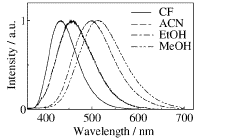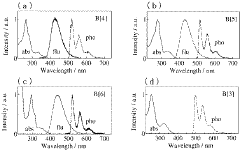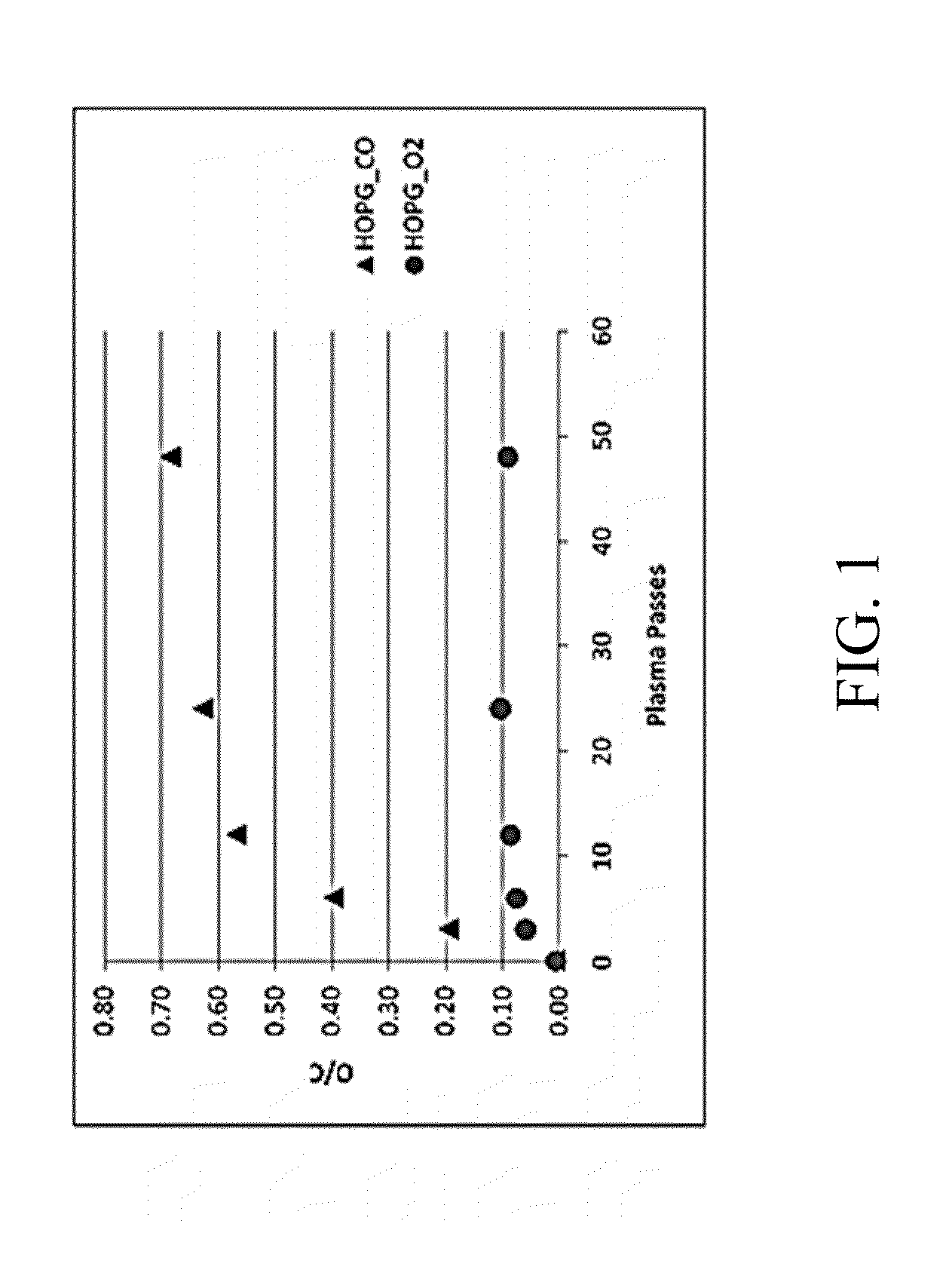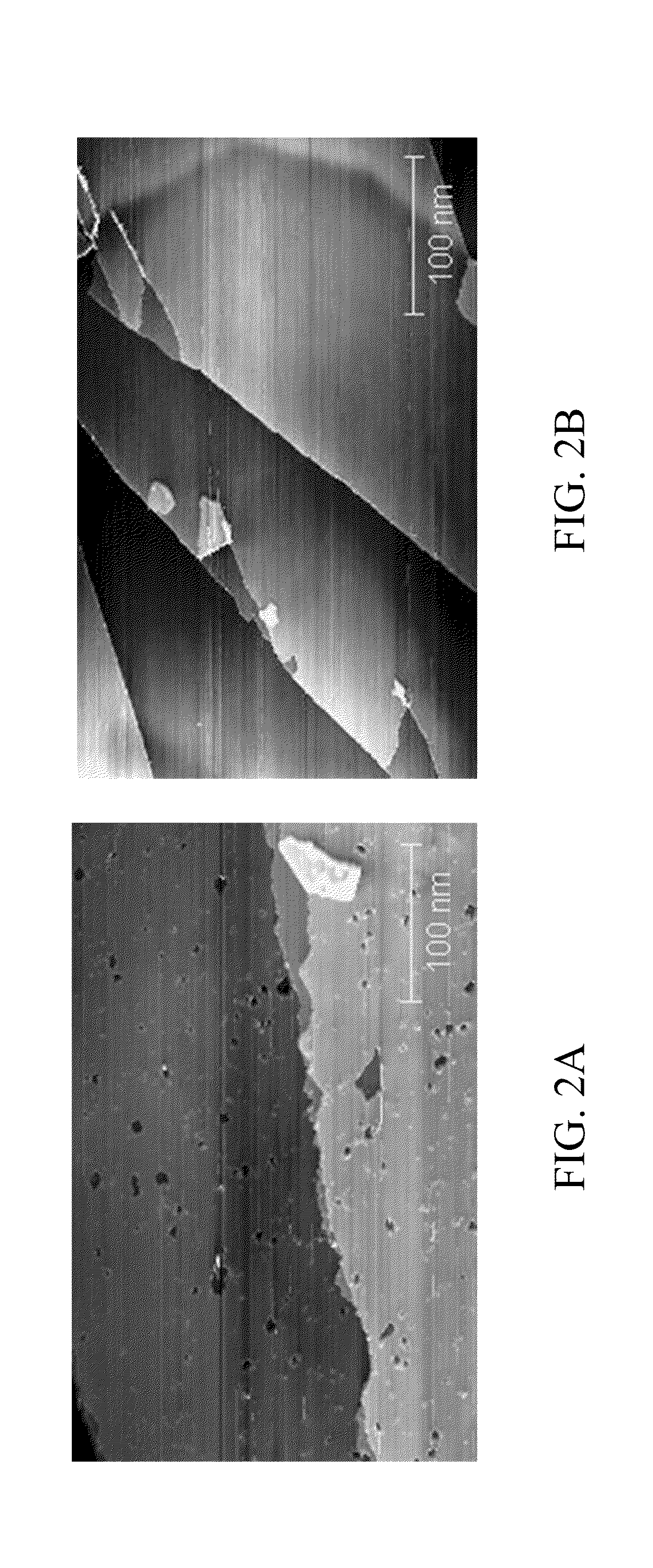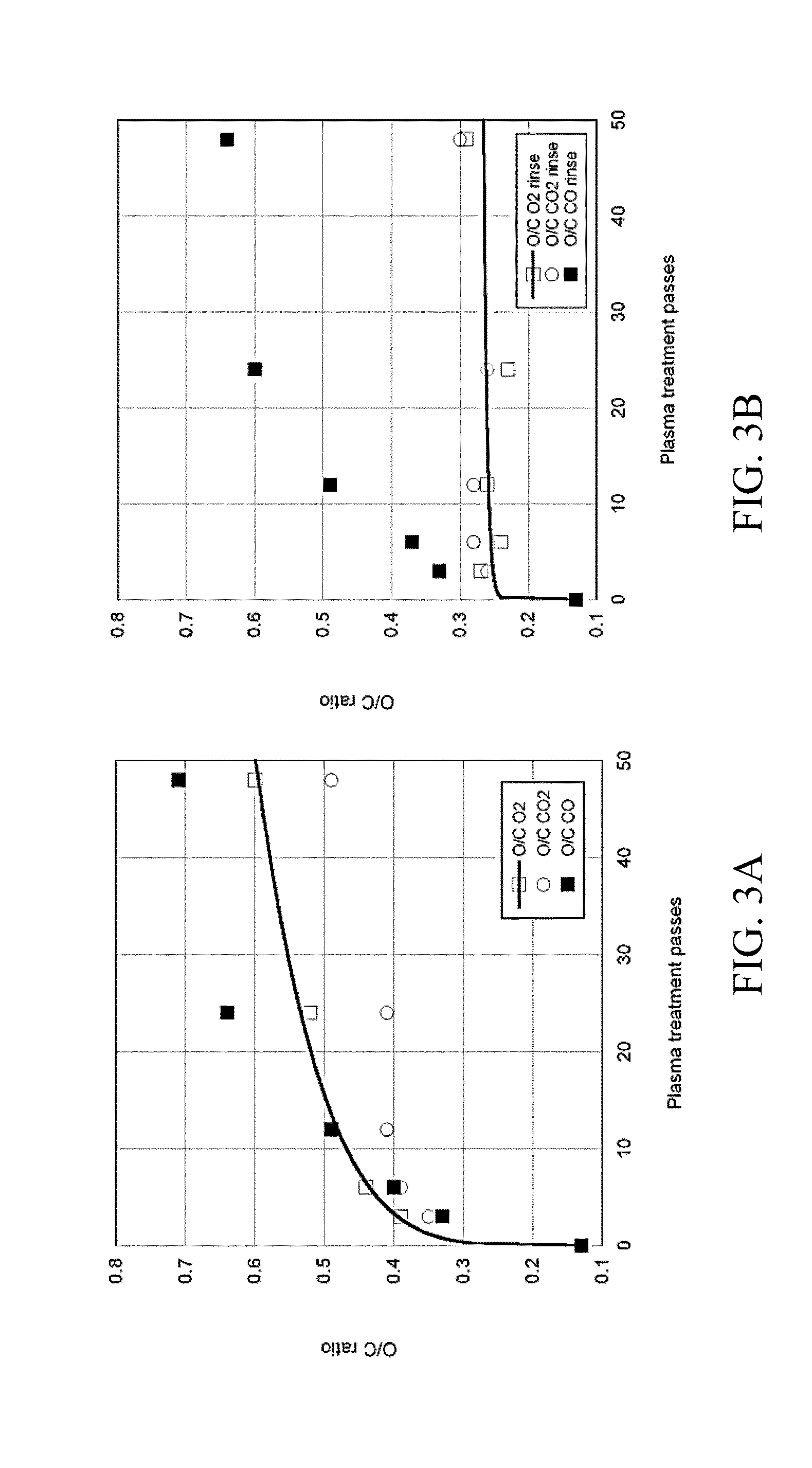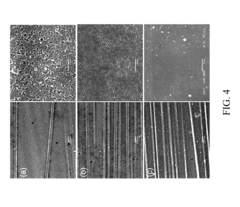Carbonyl Compound Impact on Novel Material Properties
JUL 24, 20259 MIN READ
Generate Your Research Report Instantly with AI Agent
Patsnap Eureka helps you evaluate technical feasibility & market potential.
Carbonyl Compounds and Novel Materials Overview
Carbonyl compounds, characterized by the presence of a carbon-oxygen double bond, play a crucial role in the development and modification of novel materials. These compounds, including aldehydes and ketones, exhibit unique chemical properties that significantly influence the characteristics of advanced materials across various industries.
The interaction between carbonyl compounds and novel materials has garnered increasing attention in recent years due to its potential to enhance material properties and create innovative applications. Carbonyl groups can form strong hydrogen bonds and participate in various chemical reactions, allowing for the modification of material surfaces, the creation of new polymer structures, and the improvement of material performance.
In the field of polymer science, carbonyl compounds are extensively used as monomers or modifiers to synthesize novel polymeric materials with tailored properties. For instance, the incorporation of carbonyl groups into polymer chains can enhance the material's hydrophilicity, adhesion properties, and reactivity. This has led to the development of advanced coatings, adhesives, and functional polymers with improved performance in diverse applications.
The impact of carbonyl compounds on novel materials extends beyond polymers to include nanomaterials and composite structures. Carbonyl-functionalized nanoparticles and carbon-based materials, such as graphene oxide, have shown remarkable potential in areas like drug delivery, sensing, and catalysis. The presence of carbonyl groups on these materials' surfaces enables further modifications and interactions with other molecules, expanding their functionality and applicability.
In the realm of biomaterials, carbonyl compounds play a vital role in the design of biocompatible and biodegradable materials. The ability of carbonyl groups to form reversible covalent bonds with amino groups in proteins has been exploited to develop smart materials for tissue engineering and controlled drug release systems. These materials can respond to environmental stimuli, offering new possibilities in regenerative medicine and personalized healthcare.
The study of carbonyl compounds' impact on novel materials also encompasses their role in material degradation and aging processes. Understanding the mechanisms of carbonyl-induced oxidation and cross-linking in materials is crucial for developing strategies to enhance material durability and longevity. This knowledge is particularly valuable in the automotive, aerospace, and construction industries, where material performance under various environmental conditions is critical.
As research in this field progresses, new opportunities emerge for the rational design of materials with enhanced properties and functionalities. The ongoing exploration of carbonyl chemistry in material science promises to unlock novel applications and push the boundaries of material performance across multiple sectors.
The interaction between carbonyl compounds and novel materials has garnered increasing attention in recent years due to its potential to enhance material properties and create innovative applications. Carbonyl groups can form strong hydrogen bonds and participate in various chemical reactions, allowing for the modification of material surfaces, the creation of new polymer structures, and the improvement of material performance.
In the field of polymer science, carbonyl compounds are extensively used as monomers or modifiers to synthesize novel polymeric materials with tailored properties. For instance, the incorporation of carbonyl groups into polymer chains can enhance the material's hydrophilicity, adhesion properties, and reactivity. This has led to the development of advanced coatings, adhesives, and functional polymers with improved performance in diverse applications.
The impact of carbonyl compounds on novel materials extends beyond polymers to include nanomaterials and composite structures. Carbonyl-functionalized nanoparticles and carbon-based materials, such as graphene oxide, have shown remarkable potential in areas like drug delivery, sensing, and catalysis. The presence of carbonyl groups on these materials' surfaces enables further modifications and interactions with other molecules, expanding their functionality and applicability.
In the realm of biomaterials, carbonyl compounds play a vital role in the design of biocompatible and biodegradable materials. The ability of carbonyl groups to form reversible covalent bonds with amino groups in proteins has been exploited to develop smart materials for tissue engineering and controlled drug release systems. These materials can respond to environmental stimuli, offering new possibilities in regenerative medicine and personalized healthcare.
The study of carbonyl compounds' impact on novel materials also encompasses their role in material degradation and aging processes. Understanding the mechanisms of carbonyl-induced oxidation and cross-linking in materials is crucial for developing strategies to enhance material durability and longevity. This knowledge is particularly valuable in the automotive, aerospace, and construction industries, where material performance under various environmental conditions is critical.
As research in this field progresses, new opportunities emerge for the rational design of materials with enhanced properties and functionalities. The ongoing exploration of carbonyl chemistry in material science promises to unlock novel applications and push the boundaries of material performance across multiple sectors.
Market Demand for Advanced Materials
The market demand for advanced materials with enhanced properties has been steadily increasing across various industries. Carbonyl compounds, known for their unique chemical structure and reactivity, have emerged as crucial components in the development of novel materials with improved characteristics. This growing interest is driven by the need for materials that can meet the evolving requirements of sectors such as aerospace, automotive, electronics, and healthcare.
In the aerospace industry, there is a significant demand for lightweight yet strong materials that can withstand extreme conditions. Carbonyl compounds have shown promise in enhancing the thermal stability and mechanical properties of composite materials used in aircraft construction. This has led to increased research and development efforts to incorporate these compounds into next-generation aerospace materials.
The automotive sector is another major driver of demand for advanced materials. With the push towards electric vehicles and improved fuel efficiency, manufacturers are seeking materials that can reduce vehicle weight without compromising safety or performance. Carbonyl compounds have demonstrated potential in creating polymer composites with enhanced strength-to-weight ratios, making them attractive for automotive applications.
In the electronics industry, the miniaturization trend and demand for flexible devices have created a need for materials with specific electrical and thermal properties. Carbonyl compounds have been explored for their ability to modify the conductivity and heat dissipation characteristics of electronic materials, opening up new possibilities for innovative device designs.
The healthcare sector has also shown increasing interest in advanced materials incorporating carbonyl compounds. These materials have potential applications in drug delivery systems, tissue engineering, and medical implants. The ability of carbonyl compounds to interact with biological systems in controlled ways has sparked research into their use in creating biocompatible and biodegradable materials.
Environmental concerns and sustainability goals have further fueled the demand for advanced materials. Carbonyl compounds are being investigated for their role in developing eco-friendly alternatives to traditional materials. This includes research into biodegradable plastics, sustainable packaging solutions, and materials with improved recyclability.
The global market for advanced materials is projected to grow significantly in the coming years, with carbonyl compound-enhanced materials playing a crucial role. This growth is supported by ongoing research and development efforts, as well as increasing investments from both private and public sectors. As industries continue to seek materials with superior properties, the impact of carbonyl compounds on novel material properties remains a key area of focus for material scientists and engineers worldwide.
In the aerospace industry, there is a significant demand for lightweight yet strong materials that can withstand extreme conditions. Carbonyl compounds have shown promise in enhancing the thermal stability and mechanical properties of composite materials used in aircraft construction. This has led to increased research and development efforts to incorporate these compounds into next-generation aerospace materials.
The automotive sector is another major driver of demand for advanced materials. With the push towards electric vehicles and improved fuel efficiency, manufacturers are seeking materials that can reduce vehicle weight without compromising safety or performance. Carbonyl compounds have demonstrated potential in creating polymer composites with enhanced strength-to-weight ratios, making them attractive for automotive applications.
In the electronics industry, the miniaturization trend and demand for flexible devices have created a need for materials with specific electrical and thermal properties. Carbonyl compounds have been explored for their ability to modify the conductivity and heat dissipation characteristics of electronic materials, opening up new possibilities for innovative device designs.
The healthcare sector has also shown increasing interest in advanced materials incorporating carbonyl compounds. These materials have potential applications in drug delivery systems, tissue engineering, and medical implants. The ability of carbonyl compounds to interact with biological systems in controlled ways has sparked research into their use in creating biocompatible and biodegradable materials.
Environmental concerns and sustainability goals have further fueled the demand for advanced materials. Carbonyl compounds are being investigated for their role in developing eco-friendly alternatives to traditional materials. This includes research into biodegradable plastics, sustainable packaging solutions, and materials with improved recyclability.
The global market for advanced materials is projected to grow significantly in the coming years, with carbonyl compound-enhanced materials playing a crucial role. This growth is supported by ongoing research and development efforts, as well as increasing investments from both private and public sectors. As industries continue to seek materials with superior properties, the impact of carbonyl compounds on novel material properties remains a key area of focus for material scientists and engineers worldwide.
Current Challenges in Carbonyl-Material Interactions
The interaction between carbonyl compounds and novel materials presents several significant challenges that researchers and industry professionals are currently grappling with. One of the primary issues is the reactivity of carbonyl groups, which can lead to unintended modifications of material properties. This reactivity can result in changes to the mechanical, chemical, and physical characteristics of novel materials, potentially compromising their intended functionality.
Another challenge lies in the complexity of carbonyl-material interactions at the molecular level. The diverse range of carbonyl compounds, including aldehydes and ketones, can interact with materials in various ways, making it difficult to predict and control the outcomes. These interactions can be influenced by factors such as temperature, pressure, and the presence of other chemical species, further complicating the understanding and management of these processes.
The stability of novel materials in the presence of carbonyl compounds is also a significant concern. Long-term exposure to carbonyl-containing environments can lead to degradation of material properties, affecting the durability and performance of products. This is particularly crucial in applications where materials are expected to maintain their integrity over extended periods, such as in aerospace or automotive industries.
Furthermore, the potential for carbonyl compounds to act as catalysts or initiators for unwanted reactions within novel materials poses a challenge. These reactions can lead to the formation of byproducts or structural changes that may compromise the material's intended properties. Controlling and mitigating these effects requires a deep understanding of reaction kinetics and material science.
The impact of carbonyl compounds on the surface properties of novel materials is another area of concern. Surface interactions can alter wettability, adhesion, and other interfacial properties, which are critical for many applications, including coatings, composites, and biomedical materials. Developing strategies to protect or modify surfaces to resist carbonyl-induced changes remains an ongoing challenge.
Additionally, the potential for carbonyl compounds to act as plasticizers in certain materials can lead to unexpected changes in mechanical properties. This plasticizing effect can alter the glass transition temperature, elasticity, and overall structural integrity of materials, necessitating careful consideration in material design and application.
Lastly, the environmental and health implications of carbonyl-material interactions pose challenges in terms of safety and regulatory compliance. Some carbonyl compounds are known to be toxic or carcinogenic, and their potential release or formation during material processing or degradation requires thorough investigation and mitigation strategies to ensure the safety of both workers and end-users.
Another challenge lies in the complexity of carbonyl-material interactions at the molecular level. The diverse range of carbonyl compounds, including aldehydes and ketones, can interact with materials in various ways, making it difficult to predict and control the outcomes. These interactions can be influenced by factors such as temperature, pressure, and the presence of other chemical species, further complicating the understanding and management of these processes.
The stability of novel materials in the presence of carbonyl compounds is also a significant concern. Long-term exposure to carbonyl-containing environments can lead to degradation of material properties, affecting the durability and performance of products. This is particularly crucial in applications where materials are expected to maintain their integrity over extended periods, such as in aerospace or automotive industries.
Furthermore, the potential for carbonyl compounds to act as catalysts or initiators for unwanted reactions within novel materials poses a challenge. These reactions can lead to the formation of byproducts or structural changes that may compromise the material's intended properties. Controlling and mitigating these effects requires a deep understanding of reaction kinetics and material science.
The impact of carbonyl compounds on the surface properties of novel materials is another area of concern. Surface interactions can alter wettability, adhesion, and other interfacial properties, which are critical for many applications, including coatings, composites, and biomedical materials. Developing strategies to protect or modify surfaces to resist carbonyl-induced changes remains an ongoing challenge.
Additionally, the potential for carbonyl compounds to act as plasticizers in certain materials can lead to unexpected changes in mechanical properties. This plasticizing effect can alter the glass transition temperature, elasticity, and overall structural integrity of materials, necessitating careful consideration in material design and application.
Lastly, the environmental and health implications of carbonyl-material interactions pose challenges in terms of safety and regulatory compliance. Some carbonyl compounds are known to be toxic or carcinogenic, and their potential release or formation during material processing or degradation requires thorough investigation and mitigation strategies to ensure the safety of both workers and end-users.
Existing Solutions for Carbonyl Impact Mitigation
01 Chemical reactivity of carbonyl compounds
Carbonyl compounds exhibit unique chemical reactivity due to their structure. They can undergo various reactions such as nucleophilic addition, condensation, and reduction. This reactivity is influenced by the electron-withdrawing nature of the carbonyl group, making the carbon atom electrophilic and susceptible to nucleophilic attack.- Chemical reactivity of carbonyl compounds: Carbonyl compounds exhibit unique chemical reactivity due to their structure. They can undergo various reactions such as nucleophilic addition, condensation, and reduction. This reactivity is influenced by the electron-withdrawing nature of the carbonyl group, making the carbon atom electrophilic and susceptible to nucleophilic attack.
- Physical properties of carbonyl compounds: Carbonyl compounds possess distinct physical properties that are influenced by their molecular structure. These properties include boiling points, melting points, and solubility. The presence of hydrogen bonding in some carbonyl compounds affects their intermolecular interactions, leading to higher boiling points compared to hydrocarbons of similar molecular weight.
- Spectroscopic characteristics of carbonyl compounds: Carbonyl compounds have specific spectroscopic properties that aid in their identification and characterization. They exhibit characteristic absorption bands in infrared spectroscopy due to the C=O stretching vibration. In NMR spectroscopy, the carbonyl carbon typically appears at a distinctive chemical shift, providing valuable structural information.
- Stability and decomposition of carbonyl compounds: The stability of carbonyl compounds varies depending on their structure and environmental conditions. Some carbonyl compounds are prone to decomposition or rearrangement under certain conditions, such as heat or light exposure. Understanding these stability factors is crucial for proper handling, storage, and application of carbonyl compounds in various industries.
- Applications based on carbonyl compound properties: The unique properties of carbonyl compounds make them valuable in various applications. They are used as intermediates in organic synthesis, as solvents in industrial processes, and as key components in the production of polymers, pharmaceuticals, and fragrances. Their reactivity and functional group transformations enable the creation of diverse chemical products.
02 Physical properties of carbonyl compounds
Carbonyl compounds possess distinct physical properties that are influenced by their molecular structure. These properties include boiling points, melting points, and solubility. The presence of hydrogen bonding in some carbonyl compounds can significantly affect their physical characteristics, such as increased boiling points compared to similar non-carbonyl compounds.Expand Specific Solutions03 Spectroscopic characteristics of carbonyl compounds
Carbonyl compounds have specific spectroscopic properties that aid in their identification and characterization. They exhibit characteristic absorption bands in infrared spectroscopy due to the C=O stretching vibration. In NMR spectroscopy, the carbonyl carbon typically appears at a distinctive chemical shift. These spectroscopic features are valuable for structural analysis and quality control in various industries.Expand Specific Solutions04 Stability and degradation of carbonyl compounds
The stability of carbonyl compounds can vary depending on their structure and environmental conditions. Some carbonyl compounds are prone to oxidation or reduction, while others may undergo polymerization or decomposition. Understanding these stability issues is crucial for proper storage, handling, and application of carbonyl compounds in various industrial and research settings.Expand Specific Solutions05 Applications based on carbonyl compound properties
The unique properties of carbonyl compounds make them valuable in numerous applications. They are used as solvents, flavoring agents, and intermediates in organic synthesis. In materials science, carbonyl compounds are utilized in polymer production, adhesives, and coatings. Their ability to form reversible bonds with certain substances is exploited in various industrial processes and product formulations.Expand Specific Solutions
Key Players in Novel Material Development
The research on the impact of carbonyl compounds on novel material properties is in a dynamic phase, with significant market potential and ongoing technological advancements. The industry is transitioning from early-stage research to practical applications, driven by the growing demand for advanced materials. Key players like Sumitomo Chemical, Teijin, and Cabot Corp are investing heavily in R&D, focusing on developing innovative materials with enhanced properties. The market size is expanding rapidly, fueled by applications in electronics, automotive, and healthcare sectors. While some technologies are maturing, others are still in experimental stages, indicating a diverse landscape of technological readiness across different sub-sectors.
Sumitomo Chemical Co., Ltd.
Technical Solution: Sumitomo Chemical has developed innovative approaches to study the impact of carbonyl compounds on novel material properties. Their research focuses on the synthesis of advanced polymers with enhanced thermal and mechanical properties through the incorporation of carbonyl-containing monomers. They have successfully created a series of high-performance polyimides with improved heat resistance and dimensional stability by optimizing the carbonyl content and distribution within the polymer backbone[1]. Additionally, Sumitomo has explored the use of carbonyl-functionalized nanofillers to enhance the barrier properties and flame retardancy of polymer composites, leading to materials with potential applications in electronics and automotive industries[3].
Strengths: Extensive expertise in polymer chemistry and materials science; Strong R&D capabilities in synthesizing and characterizing novel materials. Weaknesses: Potential high costs associated with specialized research equipment and materials; Longer development cycles for commercialization of new materials.
Cytec Industries, Inc.
Technical Solution: Cytec Industries has conducted extensive research on the impact of carbonyl compounds on novel material properties, particularly in the field of advanced composites and adhesives. Their approach involves the strategic incorporation of carbonyl-containing molecules into resin systems to enhance mechanical properties and durability. They have developed proprietary technologies for synthesizing carbonyl-modified epoxy resins that exhibit improved toughness and thermal stability[2]. Cytec has also explored the use of carbonyl-functionalized additives to enhance the interfacial adhesion between fibers and matrices in composite materials, resulting in superior mechanical performance and resistance to environmental degradation[4]. Their research extends to the development of high-performance coatings with enhanced barrier properties through the careful control of carbonyl group concentration and distribution.
Strengths: Strong expertise in composite materials and specialty chemicals; Established track record in developing innovative solutions for aerospace and industrial applications. Weaknesses: Potential regulatory challenges associated with new chemical formulations; Dependence on specific industry sectors for commercialization.
Core Innovations in Carbonyl-Material Science
Carbonylphenacene compound, organic luminescent material, organic semiconductor material and method of producing carbonylphenacene compound
PatentInactiveJP2015178474A
Innovation
- Introduction of a carbonyl group (acyl group) into the phenacene structure to create carbonylphenacene compounds, which exhibit resistance to high voltage and oxygen, and possess excellent light-emitting properties.
Carbonaceous nano-scaled materials having highly functionalized surface
PatentActiveUS20130099170A1
Innovation
- Atmospheric plasma treatment using carbon monoxide as the active gas to modify the surface of carbonaceous nano-scaled materials, which significantly increases the oxygen-to-carbon ratio without degrading the material, thereby improving wettability and dispersion while preserving mechanical and electrical properties.
Environmental Impact of Carbonyl Compounds
Carbonyl compounds, ubiquitous in both natural and anthropogenic environments, have significant environmental impacts that extend beyond their immediate chemical properties. These compounds play a crucial role in atmospheric chemistry, contributing to the formation of secondary organic aerosols (SOA) and influencing air quality on local and global scales.
In urban environments, carbonyl compounds are primarily emitted from vehicular exhaust and industrial processes. They react with nitrogen oxides in the presence of sunlight, leading to the formation of photochemical smog and ground-level ozone. This process not only degrades air quality but also poses serious health risks to human populations, particularly those with respiratory conditions.
The environmental persistence of carbonyl compounds varies widely depending on their structure and reactivity. Some volatile carbonyls, such as formaldehyde and acetaldehyde, can be rapidly transformed in the atmosphere through photolysis or reaction with hydroxyl radicals. However, their breakdown products may contribute to the formation of more stable secondary pollutants, prolonging their environmental impact.
In aquatic ecosystems, carbonyl compounds can enter through various pathways, including atmospheric deposition, industrial effluents, and natural sources. Their presence in water bodies can lead to the formation of disinfection by-products during water treatment processes, potentially affecting drinking water quality. Additionally, some carbonyl compounds exhibit toxicity to aquatic organisms, disrupting ecosystem balance and biodiversity.
The impact of carbonyl compounds on soil environments is less studied but equally important. These compounds can affect soil microbial communities, potentially altering nutrient cycling and organic matter decomposition rates. In agricultural settings, the presence of certain carbonyl compounds in soil may influence crop growth and yield, either directly through phytotoxicity or indirectly by modifying soil chemistry.
Climate change implications of carbonyl compounds are also noteworthy. Many of these compounds are potent greenhouse gases, contributing to global warming. Furthermore, their role in SOA formation affects cloud condensation nuclei, potentially influencing cloud formation and precipitation patterns on a regional scale.
As environmental regulations tighten, there is an increasing focus on developing strategies to mitigate the impact of carbonyl compounds. This includes improving industrial emission controls, advancing catalytic converters in vehicles, and exploring green chemistry alternatives to reduce the use and production of harmful carbonyl compounds in various industrial processes.
In urban environments, carbonyl compounds are primarily emitted from vehicular exhaust and industrial processes. They react with nitrogen oxides in the presence of sunlight, leading to the formation of photochemical smog and ground-level ozone. This process not only degrades air quality but also poses serious health risks to human populations, particularly those with respiratory conditions.
The environmental persistence of carbonyl compounds varies widely depending on their structure and reactivity. Some volatile carbonyls, such as formaldehyde and acetaldehyde, can be rapidly transformed in the atmosphere through photolysis or reaction with hydroxyl radicals. However, their breakdown products may contribute to the formation of more stable secondary pollutants, prolonging their environmental impact.
In aquatic ecosystems, carbonyl compounds can enter through various pathways, including atmospheric deposition, industrial effluents, and natural sources. Their presence in water bodies can lead to the formation of disinfection by-products during water treatment processes, potentially affecting drinking water quality. Additionally, some carbonyl compounds exhibit toxicity to aquatic organisms, disrupting ecosystem balance and biodiversity.
The impact of carbonyl compounds on soil environments is less studied but equally important. These compounds can affect soil microbial communities, potentially altering nutrient cycling and organic matter decomposition rates. In agricultural settings, the presence of certain carbonyl compounds in soil may influence crop growth and yield, either directly through phytotoxicity or indirectly by modifying soil chemistry.
Climate change implications of carbonyl compounds are also noteworthy. Many of these compounds are potent greenhouse gases, contributing to global warming. Furthermore, their role in SOA formation affects cloud condensation nuclei, potentially influencing cloud formation and precipitation patterns on a regional scale.
As environmental regulations tighten, there is an increasing focus on developing strategies to mitigate the impact of carbonyl compounds. This includes improving industrial emission controls, advancing catalytic converters in vehicles, and exploring green chemistry alternatives to reduce the use and production of harmful carbonyl compounds in various industrial processes.
Regulatory Framework for Novel Materials
The regulatory framework for novel materials, particularly those involving carbonyl compounds, is a complex and evolving landscape. As research on the impact of carbonyl compounds on novel material properties advances, regulatory bodies worldwide are adapting their policies to ensure safety, environmental protection, and responsible innovation.
In the United States, the Environmental Protection Agency (EPA) plays a crucial role in regulating novel materials through the Toxic Substances Control Act (TSCA). The TSCA requires manufacturers to submit premanufacture notices for new chemical substances, including those containing carbonyl compounds. This process involves rigorous safety assessments and risk evaluations to determine potential impacts on human health and the environment.
The European Union has implemented the Registration, Evaluation, Authorization, and Restriction of Chemicals (REACH) regulation, which applies to novel materials incorporating carbonyl compounds. REACH mandates that companies register their substances with the European Chemicals Agency (ECHA) and provide comprehensive safety data. This regulation emphasizes the principle of "no data, no market," ensuring that novel materials are thoroughly evaluated before entering the market.
In Asia, countries like Japan and South Korea have established their own regulatory frameworks. Japan's Chemical Substances Control Law (CSCL) and South Korea's Act on Registration and Evaluation of Chemicals (K-REACH) both require manufacturers to register and assess the safety of novel materials, including those with carbonyl compounds.
International collaboration is increasingly important in harmonizing regulatory approaches for novel materials. The Organization for Economic Co-operation and Development (OECD) has developed guidelines for the testing and assessment of chemicals, which are widely adopted by member countries. These guidelines provide a standardized approach to evaluating the properties and potential risks of novel materials containing carbonyl compounds.
As research progresses, regulatory frameworks are adapting to address specific challenges posed by carbonyl compounds in novel materials. This includes the development of new testing methodologies, exposure assessment techniques, and risk management strategies. Regulatory bodies are also focusing on the potential long-term effects of these materials, considering their entire lifecycle from production to disposal.
The regulatory landscape for novel materials is continuously evolving, with a growing emphasis on sustainable chemistry and circular economy principles. This shift is influencing how carbonyl compounds are regulated in novel materials, encouraging the development of safer alternatives and more environmentally friendly production processes.
In the United States, the Environmental Protection Agency (EPA) plays a crucial role in regulating novel materials through the Toxic Substances Control Act (TSCA). The TSCA requires manufacturers to submit premanufacture notices for new chemical substances, including those containing carbonyl compounds. This process involves rigorous safety assessments and risk evaluations to determine potential impacts on human health and the environment.
The European Union has implemented the Registration, Evaluation, Authorization, and Restriction of Chemicals (REACH) regulation, which applies to novel materials incorporating carbonyl compounds. REACH mandates that companies register their substances with the European Chemicals Agency (ECHA) and provide comprehensive safety data. This regulation emphasizes the principle of "no data, no market," ensuring that novel materials are thoroughly evaluated before entering the market.
In Asia, countries like Japan and South Korea have established their own regulatory frameworks. Japan's Chemical Substances Control Law (CSCL) and South Korea's Act on Registration and Evaluation of Chemicals (K-REACH) both require manufacturers to register and assess the safety of novel materials, including those with carbonyl compounds.
International collaboration is increasingly important in harmonizing regulatory approaches for novel materials. The Organization for Economic Co-operation and Development (OECD) has developed guidelines for the testing and assessment of chemicals, which are widely adopted by member countries. These guidelines provide a standardized approach to evaluating the properties and potential risks of novel materials containing carbonyl compounds.
As research progresses, regulatory frameworks are adapting to address specific challenges posed by carbonyl compounds in novel materials. This includes the development of new testing methodologies, exposure assessment techniques, and risk management strategies. Regulatory bodies are also focusing on the potential long-term effects of these materials, considering their entire lifecycle from production to disposal.
The regulatory landscape for novel materials is continuously evolving, with a growing emphasis on sustainable chemistry and circular economy principles. This shift is influencing how carbonyl compounds are regulated in novel materials, encouraging the development of safer alternatives and more environmentally friendly production processes.
Unlock deeper insights with Patsnap Eureka Quick Research — get a full tech report to explore trends and direct your research. Try now!
Generate Your Research Report Instantly with AI Agent
Supercharge your innovation with Patsnap Eureka AI Agent Platform!
